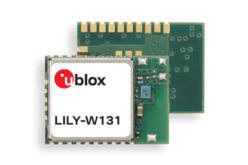IoT Devices Targeted by Malware, Giving Hackers Remote Control

Researchers have made a significant discovery in the field of cybersecurity, uncovering a new variant of the Mirai malware known as IZ1H9. This malicious software specifically targets small IoT devices, allowing hackers to remotely control them for the purpose of executing large-scale network attacks.
Unit 42, the threat research team affiliated with Palo Alto Networks, was responsible for identifying this particular variant. Initially detected in 2018, IZ1H9 focuses on exploiting vulnerabilities within the Linux network, which is predominantly utilized by IoT devices and has experienced a surge in activity in recent years.
During May, the Unit 42 researchers released a comprehensive analysis of the malware, revealing a series of IZ1H9 attacks originating from a single source since November 2021.
“IoT devices have consistently been an attractive target for malicious actors, with remote code execution attacks posing the most prevalent and concerning threats to both IoT devices and Linux servers,” stated the researchers. “The exposure of vulnerable devices can result in severe consequences.”
The researchers emphasized that although the vulnerabilities exploited by this threat may be less intricate, their impact should not be underestimated as they can still facilitate remote code execution. Once a compromised device falls under the control of an attacker, it can be incorporated into their botnet.
In order to counteract this emerging threat, Unit 42 recommended implementing regular updates whenever possible to actively monitor and address potential security risks.
The Mirai malware, of which IZ1H9 is a variant, possesses the capability to identify and target inadequately secured smart devices, ultimately commandeering them to establish a network of remotely controlled bots capable of launching collective cyberattacks. Consumer devices are often the primary targets, which are then exploited to carry out distributed denial of service (DDoS) attacks.
Furthermore, the discovery of the IZ1H9 variant underscores the ongoing challenges posed by IoT device security. These devices, often designed with convenience and connectivity in mind, tend to have limited built-in security measures, making them prime targets for cybercriminals. The ability of hackers to gain remote control over IoT devices through malware like IZ1H9 not only puts the compromised devices at risk but also endangers the overall network infrastructure.
The Unit 42 researchers highlight the potential for these compromised devices to be harnessed as part of a botnet, amplifying the scale and impact of network attacks. With a vast number of IoT devices connected to the internet, the collective power of such a botnet can be staggering, capable of launching large-scale distributed attacks that can disrupt critical services and infrastructure.
Addressing the IZ1H9 threat requires a multi-faceted approach. Alongside regular software updates, device manufacturers and IoT service providers must prioritize the implementation of robust security measures throughout the product lifecycle. This includes rigorous testing, vulnerability assessments, and timely patching of discovered vulnerabilities.
Additionally, end-users play a crucial role in securing their IoT devices. It is essential to change default passwords, use strong and unique passwords, and apply firmware updates promptly. Educating users about the importance of IoT security practices and promoting awareness of potential risks can help foster a more resilient ecosystem.
Collaboration between cybersecurity researchers, industry stakeholders, and policymakers is also vital in combatting such malware variants. Sharing threat intelligence, developing industry-wide standards, and establishing regulations that enforce security best practices can enhance the overall security posture of IoT devices.
As the IoT landscape continues to expand, with more devices becoming interconnected, it is imperative to stay vigilant and proactive in addressing evolving security threats. By adopting a comprehensive and proactive approach to IoT security, we can mitigate the risks posed by malware variants like IZ1H9 and safeguard the integrity and reliability of IoT ecosystems.
In conclusion, the discovery of the IZ1H9 variant of the Mirai malware highlights the ongoing security challenges associated with IoT devices. This malware targets small IoT devices and allows hackers to remotely control them for large-scale network attacks. The vulnerabilities exploited by IZ1H9, although less complex, can still lead to remote code execution, making it a significant threat.
To combat this threat, it is crucial to prioritize IoT device security by implementing regular updates, enhancing built-in security measures, and educating users about best practices. Collaboration between cybersecurity researchers, industry stakeholders, and policymakers is necessary to share intelligence, establish standards, and enforce regulations to enhance IoT security.
By taking a comprehensive and proactive approach to IoT security, we can mitigate the risks posed by malware variants like IZ1H9, protect IoT devices and networks, and ensure the integrity and reliability of IoT ecosystems.
Content: Anissh














